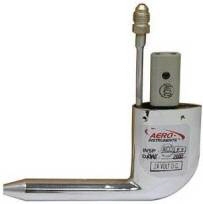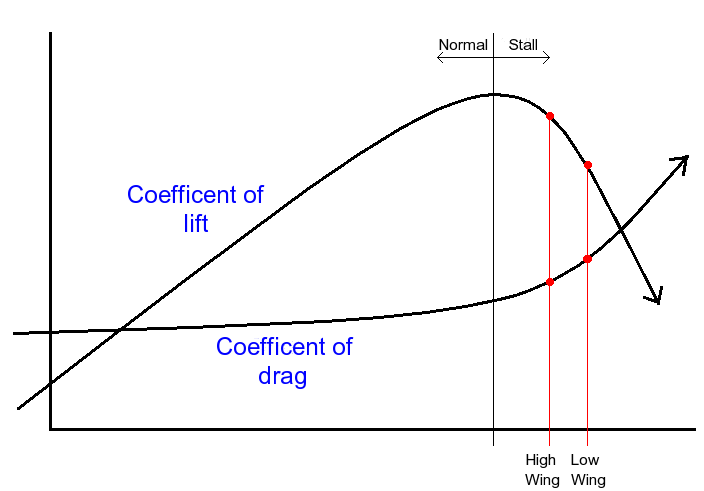|
Northwest Airlines Flight 6231
Northwest Orient Airlines Flight 6231 was the fatal crash of a Boeing 727 on December 1, 1974 in Harriman State Park near Stony Point, New York, just north of the New York City area. The Northwest Airlines 727 had been chartered to pick up the Baltimore Colts professional football team in Buffalo in western New York. All three crew members on board died when the aircraft struck the ground following a stall and rapid descent caused by the crew's reaction to erroneous airspeed readings caused by atmospheric icing. The icing occurred due to failure to turn on the pitot tube heating at the start of the flight. This was one of two Boeing 727s to crash in the United States that day; the other was TWA Flight 514 in northern Virginia, northwest of Dulles airport (250 miles to the southeast). Accident The flight was chartered to pick up the Baltimore Colts in Buffalo after the aircraft originally earmarked to transport the team was grounded by a snowstorm in Detroit. The Boeing 727- ... [...More Info...] [...Related Items...] OR: [Wikipedia] [Google] [Baidu] |
Stall (fluid Dynamics)
In fluid dynamics, a stall is a reduction in the lift coefficient generated by a foil as angle of attack increases.Crane, Dale: ''Dictionary of Aeronautical Terms, third edition'', p. 486. Aviation Supplies & Academics, 1997. This occurs when the critical angle of attack of the foil is exceeded. The critical angle of attack is typically about 15°, but it may vary significantly depending on the fluid, foil, and Reynolds number. Stalls in fixed-wing flight are often experienced as a sudden reduction in lift as the pilot increases the wing's angle of attack and exceeds its critical angle of attack (which may be due to slowing down below stall speed in level flight). A stall does not mean that the engine(s) have stopped working, or that the aircraft has stopped moving—the effect is the same even in an unpowered glider aircraft. Vectored thrust in aircraft is used to maintain altitude or controlled flight with wings stalled by replacing lost wing lift with engine or propeller thr ... [...More Info...] [...Related Items...] OR: [Wikipedia] [Google] [Baidu] |
TWA Flight 514
Trans World Airlines Flight 514, registration N54328, was a Boeing 727-231 en route from Indianapolis, Indiana and Columbus, Ohio to Washington Dulles International that crashed into Mount Weather, Virginia, on Sunday, 1974. All 92 aboard, and seven crew members, were killed. In stormy conditions late in the morning, the aircraft was in controlled flight and impacted a low mountain northwest of its revised destination. Accident The flight was scheduled for Washington National Airport, but was diverted to Dulles when high crosswinds, east at and gusting to , prevented safe operations on the main north–south runway at Washington National. The flight was being vectored for a non-precision instrument approach to runway 12 at Dulles. Air traffic controllers cleared the flight down to before clearing them for the approach while not on a published segment. The jetliner began a descent to , shown on the first checkpoint for the published approach. The cockpit voice recorder ... [...More Info...] [...Related Items...] OR: [Wikipedia] [Google] [Baidu] |
Mach Number
Mach number (M or Ma) (; ) is a dimensionless quantity in fluid dynamics representing the ratio of flow velocity past a boundary to the local speed of sound. It is named after the Moravian physicist and philosopher Ernst Mach. : \mathrm = \frac, where: : is the local Mach number, : is the local flow velocity with respect to the boundaries (either internal, such as an object immersed in the flow, or external, like a channel), and : is the speed of sound in the medium, which in air varies with the square root of the thermodynamic temperature. By definition, at Mach1, the local flow velocity is equal to the speed of sound. At Mach0.65, is 65% of the speed of sound (subsonic), and, at Mach1.35, is 35% faster than the speed of sound (supersonic). Pilots of high-altitude aerospace vehicles use flight Mach number to express a vehicle's true airspeed, but the flow field around a vehicle varies in three dimensions, with corresponding variations in local Mach number. The local spe ... [...More Info...] [...Related Items...] OR: [Wikipedia] [Google] [Baidu] |
Angle Of Attack
In fluid dynamics, angle of attack (AOA, α, or \alpha) is the angle between a reference line on a body (often the chord line of an airfoil) and the vector representing the relative motion between the body and the fluid through which it is moving. Angle of attack is the angle between the body's reference line and the oncoming flow. This article focuses on the most common application, the angle of attack of a wing or airfoil moving through air. In aerodynamics, angle of attack specifies the angle between the chord line of the wing of a fixed-wing aircraft and the vector representing the relative motion between the aircraft and the atmosphere. Since a wing can have twist, a chord line of the whole wing may not be definable, so an alternate reference line is simply defined. Often, the chord line of the root of the wing is chosen as the reference line. Another choice is to use a horizontal line on the fuselage as the reference line (and also as the longitudinal axis). Some aut ... [...More Info...] [...Related Items...] OR: [Wikipedia] [Google] [Baidu] |
Control Column
A yoke, alternatively known as a control wheel or a control column, is a device used for piloting some fixed-wing aircraft.Crane, Dale: ''Dictionary of Aeronautical Terms, third edition'', page 563. Aviation Supplies & Academics, 1997. . The pilot uses the yoke to control the attitude of the plane, usually in both pitch and roll. Rotating the control wheel controls the ailerons and the roll axis. Fore and aft movement of the control column controls the elevator and the pitch axis. When the yoke is pulled back, the nose of the aircraft rises. When the yoke is pushed forward, the nose is lowered. When the yoke is turned left, the plane rolls to the left, and when it is turned to the right, the plane rolls to the right. Small to medium-size aircraft, usually limited to propeller-driven, feature a mechanical system whereby the yoke is connected directly to the control surfaces with cables and rods. Human muscle power alone is not enough for larger and more powerful aircraft, ... [...More Info...] [...Related Items...] OR: [Wikipedia] [Google] [Baidu] |
Pitot Tube Wings Without Txt , a pressure measurement instrument used to measure fluid flow velocity
{{surname, Pitot ...
Pitot is a surname. Notable people with the surname include: *Henri Pitot (1695–1771), French hydraulic engineer and the inventor of the Pitot tube *James Pitot (1784–1831), the second Mayor of New Orleans *François Pitot, Captain of the French frigate ''Vengeance'' during the Quasi-War See also * Pitot House, a historic landmark in New Orleans * Pitot tube A pitot ( ) tube (pitot probe) measures fluid flow velocity. It was invented by a French engineer, Henri Pitot, in the early 18th century, and was modified to its modern form in the mid-19th century by a French scientist, Henry Darcy. It is ... [...More Info...] [...Related Items...] OR: [Wikipedia] [Google] [Baidu] |
Flight Engineer
A flight engineer (FE), also sometimes called an air engineer, is the member of an aircraft's flight crew who monitors and operates its complex aircraft systems. In the early era of aviation, the position was sometimes referred to as the "air mechanic". Flight engineers can still be found on some larger fixed-wing airplanes and helicopters. A similar crew position exists on some spacecraft. In most modern aircraft, their complex systems are both monitored and adjusted by electronic microprocessors and computers, resulting in the elimination of the flight engineer's position. In earlier days, most larger aircraft were designed and built with a flight engineer's position. For U.S. civilian aircraft that require a flight engineer as part of the crew, the FE must possess an FAA Flight Engineer Certificate with reciprocating, turboprop, or turbojet ratings appropriate to the aircraft. Whereas the four-engine Douglas DC-4 did not require an FE, the FAA type certificates of subsequent f ... [...More Info...] [...Related Items...] OR: [Wikipedia] [Google] [Baidu] |
Thiells, New York
Thiells, known as Thiell's Corner in the 1850s, is a hamlet and census-designated place (CDP) in the town of Haverstraw, Rockland County, New York, United States. It is located north of Mount Ivy, east of Pomona, south of Tomkins Cove, and west of Garnerville. The population was 5,032 as of the 2010 census. During the American Revolution, Thiells was known as Haverstraw Forge, where General "Mad" Anthony Wayne, leading 1,350 Continental Army troops, was able to watch the area of Stony Point. Geography Thiells is located at (41.207392, −74.006829). According to the United States Census Bureau, the CDP has a total area of , of which is land and 0.53% is water. Thiells is located on U.S. Route 202 between the Palisades Interstate Parkway and U.S. Route 9W and is west of the Hudson River. Demographics As of the census of 2000, there were 4,758 people, 1,503 households, and 1,300 families residing in the CDP. The population density was 2,562.2 per square mile (987.7/km2). ... [...More Info...] [...Related Items...] OR: [Wikipedia] [Google] [Baidu] |
National Transportation Safety Board
The National Transportation Safety Board (NTSB) is an independent U.S. government investigative agency responsible for civil transportation accident investigation. In this role, the NTSB investigates and reports on aviation accidents and incidents, certain types of highway crashes, ship and marine accidents, pipeline incidents, bridge failures, and railroad accidents. The NTSB is also in charge of investigating cases of hazardous materials releases that occur during transportation. The agency is based in Washington, D.C. It has four regional offices, located in Anchorage, Alaska; Denver, Colorado; Ashburn, Virginia; and Seattle, Washington. The agency also operates a national training center at its Ashburn facility. History The origin of the NTSB was in the Air Commerce Act of 1926, which assigned the United States Department of Commerce responsibility for investigating domestic aviation accidents. Before the NTSB, the Federal Aviation Administration's (FAA; at the t ... [...More Info...] [...Related Items...] OR: [Wikipedia] [Google] [Baidu] |
Spin (flight)
In flight dynamics a spin is a special category of stall resulting in autorotation (uncommanded roll) about the aircraft's longitudinal axis and a shallow, rotating, downward path approximately centred on a vertical axis. Spins can be entered intentionally or unintentionally, from any flight attitude if the aircraft has sufficient yaw while at the stall point. In a normal spin, the wing on the inside of the turn stalls while the outside wing remains flying. It is possible for both wings to stall, but the angle of attack of each wing, and consequently its lift and drag, are different. Either situation causes the aircraft to autorotate toward the stalled wing due to its higher drag and loss of lift. Spins are characterized by high angle of attack, an airspeed below the stall on at least one wing and a shallow descent. Recovery and avoiding a crash may require a specific and counter-intuitive set of actions. A spin differs from a spiral dive, in which neither wing is stalled a ... [...More Info...] [...Related Items...] OR: [Wikipedia] [Google] [Baidu] |
Stick Shaker
A stick shaker is a mechanical device designed to rapidly and noisily vibrate the control yoke (the "stick") of an aircraft, warning the flight crew that an imminent aerodynamic stall has been detected. It is typically present on the majority of large civil jet aircraft, as well as most large military planes. The stick shaker comprises a key component of an aircraft's stall protection system. Several accidents, such as the 1963 BAC One-Eleven test crash and American Airlines Flight 191, were attributable to aerodynamic stalls and motivated aviation regulatory bodies to establish requirements for certain aircraft to be outfitted with stall protection measures, such as the stick shaker and stick pusher, to reduce such occurrences. While the stick shaker has become relatively prevalent amongst airliners and large transport aircraft, such devices are not infallible and require flight crews to be appropriately trained on their functionality and how to respond to their activation. Sev ... [...More Info...] [...Related Items...] OR: [Wikipedia] [Google] [Baidu] |
Aircraft Registration
An aircraft registration is a code unique to a single aircraft, required by Chicago Convention, international convention to be marked on the exterior of every civil aircraft. The registration indicates the aircraft's country of registration, and functions much like an automobile license plate or a ship registration. This code must also appear in its Certificate of Registration, issued by the relevant civil aviation authority (CAA). An aircraft can only have one registration, in one jurisdiction, though it is changeable over the life of the aircraft. Legal provisions In accordance with the Convention on International Civil Aviation (also known as the Chicago Convention), all civil aircraft must be registered with a civil aviation authority (CAA) using procedures set by each country. Every country, even those not party to the Chicago Convention, has an NAA whose functions include the registration of civil aircraft. An aircraft can only be registered once, in one jurisdiction, at a ... [...More Info...] [...Related Items...] OR: [Wikipedia] [Google] [Baidu] |

.jpg)
.jpg)






_AN0528338.jpg)
